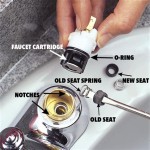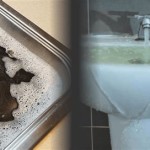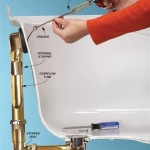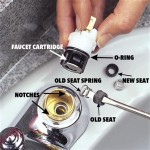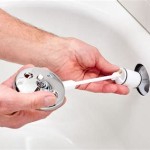Older Bathtub Faucet Parts: Understanding the Components of Vintage Fixtures
Older bathtub faucets, often found in homes built before the widespread adoption of modern plumbing fixtures, present unique challenges when it comes to repair and replacement. These antique faucets, with their intricate designs and sometimes antiquated materials, require a specific understanding of their individual components. Knowing these parts and their functions is essential for successful troubleshooting, maintenance, and ultimately, ensuring the longevity of your vintage bathtub faucet.
Understanding the Anatomy of Older Bathtub Faucets
Older bathtub faucets typically employ a more complex design than their modern counterparts. They often feature separate handles for hot and cold water control, and the cartridge system (a single unit that controls both water flow and temperature) is less common. This means each component plays a distinct role in the functionality of the faucet. Here's a breakdown of some key parts to be familiar with:
1. Spindle
The spindle acts as the central control mechanism of the faucet. It's a threaded rod that connects to the handle and extends down into the valve assembly. Turning the handle rotates the spindle, which in turn opens or closes the valve, allowing water to flow or stop. The spindle can be made from various materials, including brass, steel, or ceramic. Understanding the spindle's material is crucial for identifying compatible replacement parts.
2. Valve
The valve is responsible for regulating water flow. In older faucets, the valve may be a ball valve, a disc valve, or a compression valve. These valves control the opening and closing of the water passage, allowing water to flow when the handle is turned on and stopping the flow when it's turned off. The type of valve will determine the way the faucet operates and the type of replacement parts required.
3. Cartridge
While not as common in older faucets as in modern designs, cartridges are sometimes found in older bathtub faucets. A cartridge is a single unit that combines both the valve and the flow control mechanism. Turning the handle moves the cartridge within the body of the faucet, controlling both water flow and temperature. Cartridges are typically made from ceramic or plastic and are often easier to replace than individual components.
4. O-rings and Washers
O-rings and washers are essential for preventing leaks in older bathtub faucets. O-rings are rubber or plastic rings that create a seal between moving parts, such as the spindle and the valve. Washers, often made of rubber, leather, or a composite material, are placed under the valve to create a tight seal when the valve is closed. Over time, these seals can wear out, leading to leaks. Replacing them is a common maintenance task for older faucets.
5. Aerator
The aerator is a small, removable component at the end of the spout. It mixes air with the water stream, creating a smoother and more consistent flow. This reduces splashing and can help conserve water. Aerators can become clogged with mineral deposits over time, affecting water flow. Cleaning or replacing the aerator can restore proper function.
Addressing Common Issues with Older Bathtub Faucets
Understanding the parts of an older bathtub faucet is crucial in addressing common repair issues. These include:
1. Leaking Faucets
Leaks are a common problem with older faucets, often caused by worn-out seals or a loose valve. Identifying the specific area of the leak is essential for determining the cause and the appropriate repair solution.
2. Reduced Water Flow
A decrease in water flow can be attributed to several factors, including mineral buildup in the valve, a clogged aerator, or a worn-out cartridge. Cleaning or replacing the affected parts can restore proper water flow.
3. Difficulty Turning Handles
Stiff handles indicate friction within the valve assembly. This can be caused by mineral buildup, a damaged spindle, or a worn-out washer. Cleaning, lubricating, or replacing the affected components can restore smooth operation.
Maintenance Tips for Extending the Life of Older Bathtub Faucets
While older bathtub faucets may require more frequent attention than modern ones, regular care can extend their lifespan. Here are a few essential maintenance tips:
1. Regular Cleaning
Clean your faucet regularly using a mild cleaning agent. This removes mineral buildup and helps prevent corrosion.
2. Lubrication
Lubricating moving parts, such as the spindle and handles, with a light oil can reduce friction and extend their life.
3. Replacing Worn Parts
Replace worn-out parts as soon as possible. This prevents minor issues from escalating into major problems.
By understanding the individual parts and their functions, you can approach troubleshooting and repair with greater confidence. Remember that vintage bathtub faucets represent a unique and valuable piece of your home's history. With proper care and maintenance, you can ensure these fixtures continue to grace your bathroom for many years to come.

Repair Parts For One And Two Handle Delta Bathroom Faucets

Valley Shower Valve Repair Parts

Valley Two Handle Bathroom Faucet Repair Parts

Important To Know When You Go Looking For Tub Faucet Parts

Plumbingwarehouse Com American Standard Bathroom Faucet Parts For Model 2804

Valley Shower Valve Repair Parts

Plumbingwarehouse Com American Standard Bathroom Faucet Parts For Model 7024
_WW.gif?strip=all)
Moen 4601 Bathroom Faucet Oem Replacement Parts From Ereplacementparts Com

Rack And Pinion Parts Diagram

Valley Single Handle Bathroom Faucet Repair Parts
Related Posts


